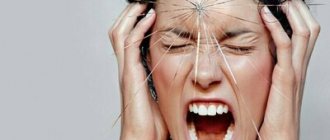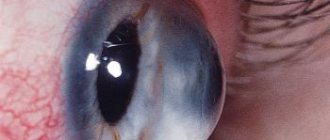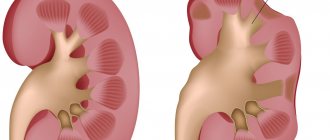If you look at someone's hands very carefully, then you can determine from them not only how neat this person is, but also find out certain information about his health. If the skin of your hands is clean and smooth, your nails are pink and smooth, then this indicates good health.
When they begin to flake and break, the hands look unkempt and untidy. At the same time, a person loses self-confidence and involuntarily tries to hide his hands from the eyes of strangers. Such untidiness is often associated not only with cosmetic problems, but also with certain abnormalities that occur in the body.
A peeling, uneven nail plate is a consequence of dystrophic changes in the structure of the plate. It gradually becomes thinner and splits into separate scales.
This condition is characterized by severe fragility, brittleness, dullness, and dry nails. They grow very slowly, the surface of the plate becomes rough.
Doctors call this condition onychodystrophy . How this condition is treated, as well as the reasons for this phenomenon, will be discussed in the article below.
Why do nails peel?
If your fingernails peel, the causes of this phenomenon can be associated with many factors.
However, to understand this phenomenon you need to know about the structure of the nail. Its plate is made up of thin, tightly pressed horny plates of keratin , which determine the density, as well as layers of water, making it elastic. The nail plate contains a large number of different microelements: zinc, chromium, calcium, etc.
The nail plate grows when the germ cells in the light part of the base of the nail, which looks like a crescent, divide. The nail grows towards the free edge, gradually pushing old cells forward.
Structural structure of nails
Layering of fingernails occurs under the influence of a number of different factors. In this case, small cracks and gaps appear between the horny layers, and then a cavity appears, stratifying the nail.
If nails peel and break, the reasons can be both external and internal.
External reasons
The influence of external factors, exposure to chemicals, which leads to dehydration of the plate:
- often lamination is due to the fact that a person comes into contact with household chemicals, hot water, alkali, etc.;
- use of varnishes containing formaldehyde ;
- frequent extensions;
- improper removal of artificial nails;
- using products containing acetone to remove or dilute nail polish;
- constant hypothermia or exposure to dry air;
- mechanical damage: improper pedicure and manicure, bruises and compression, occupational injuries to musicians and people working with certain machines and units, etc.
Internal reasons
Often parents cannot understand why a child’s nails begin to peel at the age of 2. The answer to the question of why a child’s toenails or fingernails peel is often due to internal reasons.
- iron deficiency anemia , which develops due to a lack of iron in the body;
- dysfunctions of the digestive tract, liver, biliary tract, endocrine system, in which the metabolism of minerals and their distribution in the body is disrupted;
- malnutrition, when the diet lacks a number of vitamins , protein, magnesium, calcium, phosphorus. Very often it is this factor that affects the layering of nails in children;
- since nails are a derivative of the skin, their condition worsens with diseases and skin lesions: lichen ruber, eczema , psoriasis , congenital epidermolysis , fungal diseases of the nails and skin;
- hormonal imbalance in adolescence, during menopause (at this time there is a deficiency or, conversely, an excess of certain hormones);
- poisoning with heavy metals, as well as certain drugs;
- pregnancy period , when minerals entering the body go to the fetus, which develops (if there is a deficiency of a certain mineral, then the fetus takes it from the mother’s body).
Psychological reasons
Onychophagia - compulsive nail biting
Often the answer to the question of why nails break is psychological.
The following causes of brittle nails are identified:
- the presence of a bad habit of constantly gnawing on them, knocking them on hard surfaces, etc.;
- onychotillomania is a pathological condition in which a person seeks to destroy his own nails using any tools;
- onychophagia - uncontrolled biting;
- stress and depression .
Thus, there can be many reasons why women’s fingernails break. And the condition can only be improved if the cause of brittle fingernails is correctly identified.
What vitamins do your nails lack if they look bad?
- A.
Prevents drying and cracking. - C.
Helps prevent bacterial and fungal diseases. - E.
This is the vitamin of youth - it helps renew cells and promotes nail growth. - D.
Promotes better absorption of calcium, which means it prevents nail brittleness. - Biotin for nails.
Promotes the production of amino acids containing sulfur (they are needed for the renewal of nail plates). - Inositol.
This vitamin is involved in the synthesis of protein necessary to strengthen nails. - AT 5.
Helps maintain an even surface and uniform coloring of the plates. - AT 6.
Helps control the proper growth of new cells. - Folic acid tablets.
Promotes normal metabolic processes in the body.
Conditions in which nails peel and break
Onychoschisis
In this condition, a median or symmetrical leaf-shaped splitting of the plate occurs. Only the free edge is split in the transverse direction, and its main part is not damaged. The nail may grow and not break, but its free edge becomes thinner.
Causes:
- occupational disease due to the influence of alkaline solutions;
- aggressive influence of varnish, etc.;
- injuries that are constantly repeated;
- improperly performed manicure;
- the influence of polishing tools used during manicure;
- low quality varnishes;
- x-ray dermatitis ;
- congenital epidermolysis .
Sometimes the color changes to off-white or greyish. Most often, plates are affected on the index, ring and middle fingers.
Treatment for brittle nails in this condition consists of long-term intake of vitamin A , ingestion of a 10% gelatin solution, and injections of vitamin B12 .
Onycholysis
A disease of a trophic nature. The plate separates from the nail bed. As a result, the nail plate completely or partially peels off from the side or from the free edge.
Causes:
- professional injuries;
- influence of alkalis or acids;
- various skin diseases - eczema , psoriasis , streptoderma etc.;
- endocrine disorders;
- fungal infections;
- syphilis.
The nail plate peels off and becomes white-gray.
It can affect either one or several plates on any fingers, including the toes.
Treatment depends on the cause and severity of the lesion. Syntomycin ointment is applied to the affected area for several days . It is also recommended to lubricate the affected area with Castellani Liquid . During the treatment period, you need to take vitamin A and gelatin orally.
Onychorrhexis
Longitudinal grooves appear on the nails; they start from the free edge, then split in the longitudinal direction. The process is complicated by the appearance of deep cracks.
Causes:
- lichen planus;
- eczema;
- psoriasis;
- diseases of the digestive system;
- lack of vitamins.
Alternating stripes, light and dark, appear on the affected plates. The nails on the fingers and toes, one or several plates at once, may be affected. The use of vitamin A for 1 month is indicated.
Brittle nails
In this condition, the free edge of the nail plate breaks off, and the top layer of the nail or all its layers are destroyed. As a result, the edge of the plate becomes uneven, resembling a fringe.
With this condition, the nail fold is often damaged. When the free edge is carefully cut away, the plate appears healthy. However, as it grows, the nails again become thin and brittle.
If a person has too thin fingernails, the reasons can be both external and internal.
Causes:
- improperly done manicure;
- influence of low temperatures and chemicals;
- endocrine disorders.
The color of the plate does not change, only its free edge becomes transparent or whitish, and chips of the plate are visible on it. As a rule, all nails are affected.
If your nails peel, what to do depends on the problem that caused such manifestations. In any case, if a person notices that over a period of time the fingernails or toenails become very peeling, or that the free parts of the nails are breaking, it is important to visit a dermatologist or mycologist.
But in some cases, only a specialist gastroenterologist or endocrinologist can tell you what to do if your fingernails peel, having discovered the internal cause of such problems during the research process.
Sometimes it is necessary to examine the plate for fungus and microelements; the doctor also often prescribes laboratory blood tests and hormonal tests.
A doctor can prescribe effective treatment only after determining the cause of the problem. Therefore, advice on what to do at home if your nails peel is not always relevant.
Influence of decorative coatings
Why do women's extended nails break? Do your nails break under gel polish or even after regular polish? The reason is the negative impact on the plate of chemical compounds in the coating composition and the mechanical factor.
Nail polishes contain drying components that take away moisture from the nail plate and weaken it. Products containing toluene, formaldehyde, formaldehyde resin, dibutyl phthalate, and camphor greatly dry and irritate nails. Therefore, it is better to choose varnishes with the big5free formula for nail decoration, which do not contain these 5 toxic components. Also, give your nails a rest for at least 5-7 days between coating with decorative varnishes, gel polish or extensions.
Why do nails break after gel polish? In fact, the reason is not in the coating, which gives a bright, long-lasting manicure, but in errors when applying or removing it. They are the ones who provoke brittleness, peeling and cracking of the plate. To avoid this, you need to carefully choose a specialist. This must be a person with education and experience.
Regardless of what decorative coating you are removing, gel polish or regular, do everything correctly and carefully. Do not pull on pieces of polish that have peeled off from the nail plate. Do not try to peel them off, because along with the varnish you risk removing the top layer of the nail. Remove regular varnish using removers without acetone, and remove gel coating or extended nails only with a professional using a hardware method.
Use of medications
Sometimes the doctor prescribes certain medications to improve the condition of the nails. As a rule, dietary supplements and complexes of vitamins and minerals are prescribed. However, for those who are interested in what to do to prevent nails from peeling, it is important to take into account that such products need to be used for at least one month. Only in this case can you get a positive effect.
Proper nutrition
In addition to medications, for those for whom the question of how to strengthen their nails so as not to peel is relevant, it is important to take care of proper nutrition. It is necessary that the diet contains a sufficient amount of protein foods, vegetables, fruits, as well as foods high in calcium - dairy products, green leafy vegetables, nuts.
Carrying out salon and physiotherapy procedures
If your nails constantly break, you can ask cosmetologists what to do. In beauty salons, special procedures are carried out that activate blood flow and accelerate regrowth.
- Paraffin nail application
This effect can be achieved using special procedures - wax and paraffin applications . To carry out this procedure, warm softened wax or paraffin is used, which is applied to the nail plate and soft tissue nearby and held for about 20 minutes. Those who have brittle nails should take into account that such procedures can be done at home.
- Professional nail care can improve the condition of your nails and give them a healthy look. Such procedures include aromatherapy, nourishing masks, and hand massage.
- The special Japanese manicure technique is also effective. It includes a hand massage, rubbing jojoba oil into the fingers, and after that a water massage of the hands. At the end of the procedure, a mineral mask and a special polishing powder containing beeswax are applied.
- The procedure for sealing nails - if the nails are very peeling and there is a need to completely renew the plate. During the procedure, a salt bath is made, the plate is treated with a sanding file, and oil with vitamins and natural wax are rubbed into the nail. After the procedure, the effect lasts about 3 months.
- Ultraphoresis of vitamins A and E is a procedure that allows you to “deliver” the necessary vitamins directly into the tissue. The procedure is carried out in courses of 10-15 sessions. A month later, you can conduct a second course of sessions.
- Diathermy - the procedure involves heating the distal hands in order to activate metabolic processes and blood flow.
- Hand massage allows you to improve tissue trophism and speed up metabolic processes. As a result, nail plates grow faster.
How to nourish and restore nails: moisturizing the nail plate
To keep your nails healthy and not break or peel, it is important to maintain the water-salt balance in the body: drink the required amount of clean water daily. Usually it is 2 liters, but it can be 1.5 or 3.
- Take baths with nutrient solutions. Salt baths strengthen the nail plate. You can add a few drops of olive or castor oil, as well as lemon oil. It is enough to do such a bath once a week, keep your nails in it for several minutes, and you will already see the result of the procedure.
- Do not use nail polishes and gels, cleansers with formaldehyde and toluene.
- Buy cuticle oil and apply it daily. The product will not only restore the cuticle, but also saturate the nail plate with nutrients and make it more flexible, dense and elastic.
- After a manicure, be sure to use cuticle oil and apply cream to your hands. Choose several suitable products for yourself. You should always know how to strengthen your nails. Products based on shea butter, lemon oil or sea buckthorn are well suited for these purposes. Such creams and the oils themselves nourish both nails and hands well. A manicure for peeling nails involves only surface treatment and nourishing creams and oils: no varnish!
- To prevent delamination, include in your diet vitamin complexes for nails containing vitamins A, E, B, calcium, magnesium, phosphorus, iodine, selenium. It is recommended to take vitamins as prescribed by your doctor.
- Make nourishing or paraffin masks regularly. Hands are dipped into liquid paraffin for 5 minutes, which creates a sauna effect after hardening. Hands become smooth, and nails become noticeably stronger and glossier. This can also be done as part of home hand care procedures, without visiting a salon.
- Include fermented milk products and liver in your diet, as well as foods with antioxidants. For example, grape seed oil. When there are not enough vitamins and minerals, white spots appear on the fingernails.
- Minimize your use of alcohol and tobacco. For peeling nails, these are the first enemies.
- Play sports: the general tone of the body will inevitably affect the health of the nails. 30 minutes a day three times a week is enough.
What else should you avoid if possible? From the regular use of medications, which, as the saying goes, cure one thing and cripple another. Very often, for example, due to hormonal drugs, nails, skin and hair deteriorate.
What procedures can be done at home?
If you are concerned about splitting or crumbling toenails, you should first of all ask your doctor. But it also makes sense to carry out some procedures at home to improve the condition of your hands and nails.
- First of all, you should not neglect hand creams that you use every day. When applying the cream, you need to thoroughly rub it into the cuticle area and each finger. It is better to choose products that contain vitamins, minerals, and plant extracts. If the cream is used regularly, the condition of the nails will improve. You can choose creams: Folk Healer , DiaDerm , etc. The cost of such products is from 100 rubles.
- Therapeutic varnishes are special nail varnishes that peel and break, containing growth activators, vitamins and other useful substances. They seal the plate, protecting it from external influences. Some varnishes are also used as decorative ones. The cost of such funds is from 120 rubles.
- Nail wax – protects against splitting. Contains beeswax and is used at home. Price – from 130 rub.
- Healing mud – it contains many minerals and active substances. It is necessary to dilute the mud in hot water until it becomes viscous. After cooling to approximately 38°C, apply a large layer to the nails and leave for about 15 minutes. Wash off the dirt, immerse your hands in water with sea salt. Such procedures are carried out every day for a week. After some time, the course is repeated.
What other substances are necessary for the beauty and health of nails?
- Calcium.
Provides plate density. - Silicon.
Helps nails maintain elasticity. - Ceramides (ceramides).
They serve as “building blocks” for building nails. - Zinc.
Helps get rid of white streaks. - Iodine.
Helps strengthen plates and eliminate delamination. - Sulfur.
Participates in the synthesis of keratin - the building material of nails. - L-cystine.
Stimulates the growth of the keratin layer.
For skin, hair and nails, 60 tablets, Evalar
765 ₽
Dietary supplement NOT A MEDICINE
Traditional methods
Herbal masks
Herbal mask for nails
To prepare such a mask, any of the components must be crushed using a blender or grater. After mixing all the ingredients, apply the mask to the nails and distal phalanges of the fingers, leave for up to 15 minutes. The procedure should be carried out after a short massage or warming bath.
The following masks are useful:
- from cabbage and potatoes in equal proportions with the addition of cream;
- from carrots, with the addition of lemon juice and olive oil;
- from cottage cheese and sour cream;
- from bananas.
Wax film mask
You need to melt the wax in a water bath and cool it to normal temperature. Next, dip your fingertips into the viscous wax and remove, waiting until the wax hardens. You need to perform this procedure before going to bed, and in the morning, wash off any remaining wax on your fingers with water. Do this procedure 2-3 times every week.
Baths
Activating blood circulation will help improve tissue trophism. And this can be achieved if you regularly take baths with sea salt and essential oils.
To prepare such a bath, you need to take 1 liter of warm water, a couple of drops of any essential oil and 2 tbsp. l. sea salt. The essential oil is first dissolved in a few drops of vegetable oil. You need to keep your hands in the bath for 20 minutes, while performing a light nail massage. This procedure should be done 3 times a week.
Rubbing in medicated oils
Before going to bed, rub warm oil into each nail and soft tissue nearby. Lemon, sea buckthorn, avocado, olive, castor, and jojoba oils have a beneficial effect on the condition of the skin and nail plates.
Mask of iodine, clay and olive oil
You need to mix a little blue clay, warm olive oil and a few drops of iodine. After applying the mask to your nails, you need to wait 20 minutes. The procedure is carried out every day for a week.
Edible gelatin
You need to take edible gelatin jelly internally. It should be strong, and this jelly should be taken three times a day, 1 tbsp. l. for 3-4 months. The condition of your nails will improve significantly.
Errors in care
The main mistake is a lack of moisture, leading to loss of elasticity of the plate. For some reason, too hard, dry, inflexible nails often break across or along from any touch.
Excess moisture that occurs during long and constant contact with water also has a bad effect on nails. The scales that make up nails quickly absorb moisture and become soft and loose. As a result, they get injured much more easily.
Errors in care include errors when performing a manicure or pedicure.
The most common of them include:
- intensive grinding with a polishing file, which not only gives smoothness and shine, but also injures, thins the plate, and makes it vulnerable to harmful external factors;
- Processing the free edge with a nail file in different directions, “back and forth”, and not in one;
- Dry nail cutting. This is often the reason why long nails break. They should be trimmed when they are wet: after a bath or shower;
- An unfortunate shape, with sharp edges that cling to everything. The best shape for preventing breakage is considered to be square with rounded edges or oval.
The reason why fingernails break and peel is often due to cleaning the house or washing dishes without protective gloves. Contact with water and household chemicals irritates nails and hand skin. Aggressive components from cleaning products dry out the plate, disrupt the lipid balance, and make it weakened and fragile.
Likewise, frequent hand sanitizers with alcohol have a negative effect on your nails. If you need to constantly use antiseptics, it is important to take care of additional hydration of the treated areas, because compositions with ethyl alcohol deprive the skin of moisture and cause peeling and fragility.
Let's summarize - what to do?
- Start solving the problem of brittle nails by eliminating bad household habits. Choose the least harmful household chemicals and try to use nail polishes and acetone less often.
- At the same time, start taking a vitamin complex - this way you will give your body a chance to recover faster.
- Take care not only of the nails themselves, but also of the skin of your hands.
- Make adjustments to your eating habits. Try to eat more seasonal vegetables and fruits, as well as seafood and animal protein.
- Regularly during the cold season, protect yourself by taking vitamin complexes that will replenish the lack of microelements in the body.










